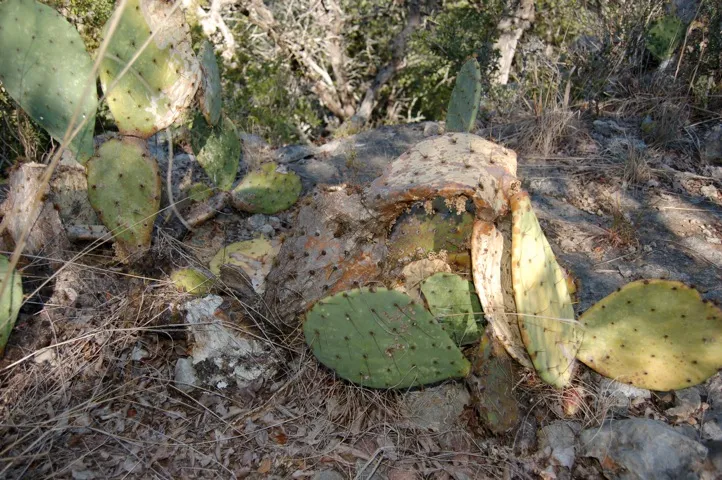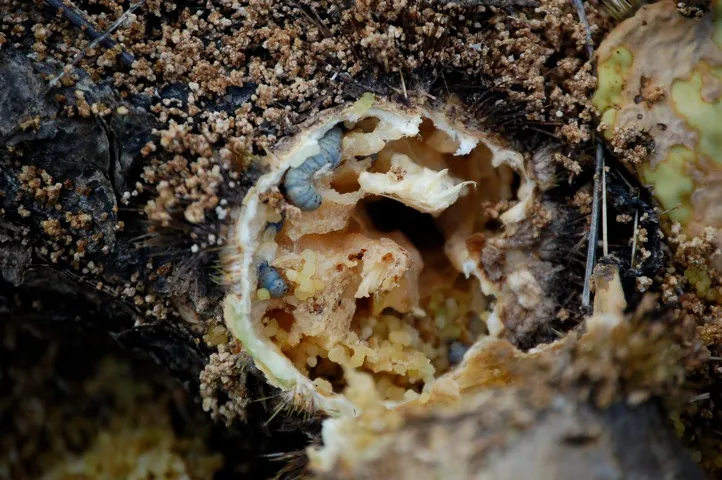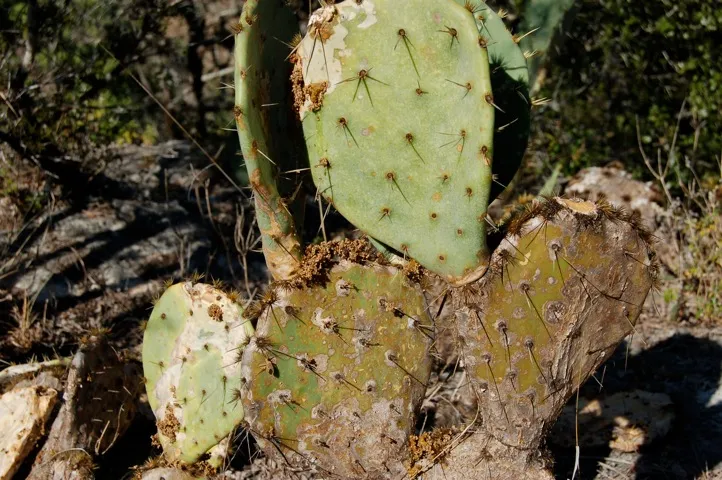By Delmar Cain
In my last article I gave my reasons for applauding the Legislature for making the prickly pear cactus the State Plant of Texas, specifically because of its toughness, its usefulness to wild and domestic animals and its importance to humans from prehistoric time until today. One would suppose that with its background, the prickly pear’s future would be (rosy) assured, especially considering its usefulness to livestock in times of drought.
To illustrate its importance consider that Darrell Ueckert, with the Texas Agricultural Experiment Station in San Angelo, reported in a 2011 Abstract on “Pricklypear ecology” that some variety of the prickly pear cactus occurs on some 30.7 million acres of rangeland in the western two-thirds of Texas. In some areas the prickly pear’s abundance is controlled. But in 80 percent of the counties it is considered to have positive values for wildlife and in 60 percent of the counties it is considered to have positive values for livestock production.

Unfortunately, trouble could be headed our way.
The Cactaceae family of plants, which includes the prickly pear, is found only in the New World, meaning that the plants in this family are indigenous only to the North and South American continents. However, many of the species, either because of their uniqueness or utility or both, have been introduced into other parts of the world. Because of its ability to survive in harsh climates and to reproduce both from seeds and by sprouting from fallen pads, the prickly pear, after being introduced in some locales, has subsequently reproduced its way into the nuisance class of plants needing control.
Australia, a country, which apparently loves the spectacle of introduced out of control critters (European rabbits in 1859, red fox in 1855 – both for the sport of hunting), welcomed the prickly pear in 1788. The aggressive newcomer promptly began to reproduce like, take your choice, either rabbits or red foxes.
By 1925 the Aussies decided to fight some of their rapidly spreading cacti through biological control. They introduced in that year a cactus moth from Argentina, with the B-movie science fiction scientific name, Cactoblastis cactorum, to control the prickly pear. In 1935 they introduced a poisonous cane toad to control an economically pesky cane beetle.
Having left behind their natural predators and parasites both introduced species reproduced amazingly well. Unfortunately, the poisonous cane toads had no effect on the cane beetles but rapidly grew into a separate problem with numbers of 200 million and rising. But, Cactoblastis cactorum, after it became established, quickly and almost totally eliminated the prickly pear in its Australian home.

In our area the prickly pear has its own set of insect pests, including the cochineal and the blue cactus borers (Melitara dentate and Melitara prodeniales), which periodically have an impact on local populations. The pictures show blue borer larvae (probably Melitara dentate) eating prickly pears on our lot here in Boerne. (The larva of the Cactoblastis cactorum looks similar to that of the Melitara dentate in the pictures except it is orange to orange-red instead of blue.) But the natural enemies of the local pests keep matters in check and our prickly pear populations have until now remain stable.
Because Cactoblastis cactorum escaped from its natural enemies, which did not make it through Argentine customs, the invited visitor from South America moved unchecked through the introduced prickly pear in Australia.
The cactus moth story might be considered an example of an excellent recovery from a near disaster if the moths had just faded away in Australia. But because Cactoblastis cactorum was such a success in Australia, folks in the Caribbean transported it there in the 1950’s also to control a rampant prickly pear population. Unfortunately the moths didn’t read the script and stay in the Caribbean.

In 1989 Cactoblastis cactorum landed in Florida and has now moved as far west as Jefferson Parish in Louisiana In an April 27, 2011 news release, the Texas Parks and Wildlife Department indicated that the likelihood is high that Cactoblastis cactorum would make it to the Texas coast. The concern is that without its natural predators Cactoblastis cactorum will spread unchecked into Texas, the Southwest and into Mexico, where the economic value of the prickly pear is in the millions of dollars. My concern is for the State Plant of Texas.
So ends another lesson from the book of Unintended Consequences.
September is upon us and there are opportunities for events in addition to football. The Boerne Chapter of the Native Plant Society will have its first meeting of the fall on Tuesday, September 6 at the Cibolo Nature Center Auditorium. The speaker for the evening is Lisa Lennon, a horticulturist from Austin, who just received a master’s degree in landscape architectural and who will discuss pocket pollinators and the landscape requirements for native bees. The program is at 7:00 PM with a social time beginning at 6:30 PM.
On September 10th, the Fredericksburg Chapter of NPSOT is sponsoring its 6th Annual Wildscapes Workshop, an all day program on native grasses, with a featured speaker, Bill Neiman, owner of Native American Seed in Junction. The program goes from 7:30 AM-3:00 PM and will be located at the Fredericksburg United Methodist Church at 1800 North Llano Street in Fredericksburg.
Finally, the City of Boerne and the Texas Commission on Environmental Quality are sponsoring the 2011 Upper Cibolo Watershed Festival on Saturday, September 17th, which is a free event to promote watershed protection, water conservation and green living techniques to reduce energy consumption. The event will have short workshops related to the above topics, food concessions and music and will promote products grown or manufactured in Texas and in the Hill Country.
